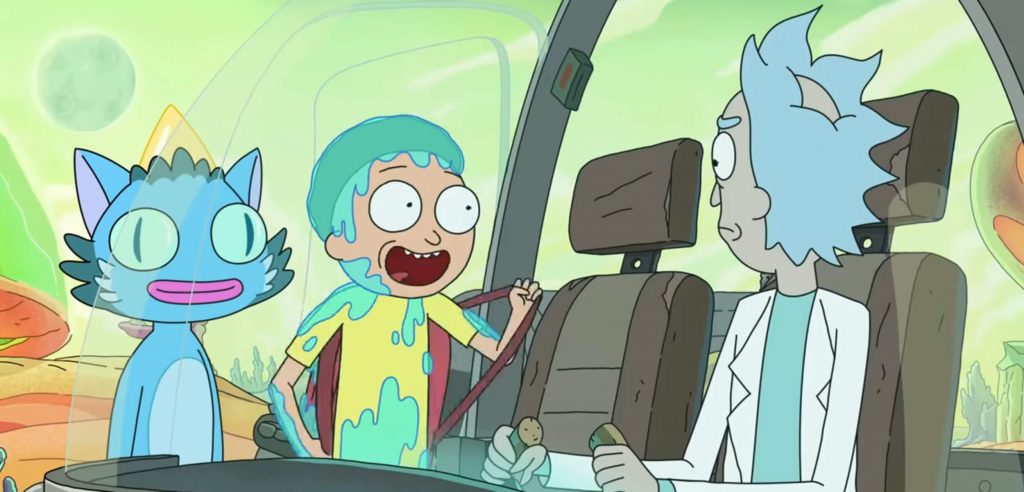By Francesca Liberatore Vaselli
Animated sci-fi sitcom Rick and Morty has finally returned after a two-year gap – the longest in the show’s history. Produced by Dan Harmon and Justin Roiland, the new season has been acclaimed as another success, despite fan disappointment at only half of the season being shown so far, and with no release date for the remaining five episodes.
A break down of the episodes:
- Edge of Tomorty: Rick Die Rickpeat is the season’s most viewed episode. It explores the philosophical question of what happens when one has the possibility of knowing their future.
- The season’s second episode, The Old Man and the Seat, is quite literally about friendship and pooping. As such, it epitomises one of the show’s major strengths: the ability to blend utter nonsense and gross-out humour with an exploration of humanity and even musings on the nature of existence.
- In One Crew over the Crewcoo’s Morty, Rick goes out of his way to prove how lame heist movies are. Fun fact: the episode features Elon Musk, CEO of Tesla, only that he’s called Elon Tusk and has, well, tusks.
- Claw and Hoarder: Special Ricktim’s Morty sees Morty get a dragon in the hope of finding a new friend, only to find out that the dragon deeply dislikes him. Amidst dragon orgies and talking cats, this is surely one of the weirdest episodes – although, as comic journalist Jesse Scheeden notes: strange doesn’t always equal enjoyable.
- Finally, ‘Rattlestar Ricklactica’ is the first episode about time travel (and snakes), breaking the show’s rule of avoiding time travel plots.
A toxic fanbase?
Season Four engages the show’s toxic fanbase more than any previous one. For example, one of the most toxic elements has to be the online harassment of the show’s female writers by misogynistic fans. This led producer Dan Harmon to comment, only half-joking: ‘Well jeez, I only meant that the character felt that way, (…) [not] that you should wave that like a flag for a new nation and go start an army in a forest somewhere’. In the show, Harmon’s ‘fan trolling’ attitude is demonstrated in several scenes. For example, in Edge of Tomorty’s fascist alternate reality Morty expresses the wish to go back to ‘classic Rick and Morty adventures, just like in the old days’. Also, in Claw and Hoarder the talking cat is thrown out of the boat and told to stop asking questions and start having fun.
Where are Beth and Summer?
However, season four leaves us with a big problem: the show’s main female characters are simply not given enough space to develop. This is especially unfortunate if we consider how interesting Beth’s suspicion of being a clone was, as well as Summer’s development from a conventional teenager to a ‘cool’ hero in season three. As David Opie comments, these episodes signaled a retrogression to the treatment of female characters in Season One.
Entering a new era
In May 2018, Harmon and Roiland signed a contract for seventy new Rick and Morty episodes with Adult Swim. Considering that Rick and Morty has only had a total of thirty-six episodes across seven years, this agreement sounded particularly odd, sparking worries that things might change causing the show to lose its magic. Being the first season produced after signing the contract, season four has brought good news overall. The show still offered its characteristic pastiche of nihilism, subverted expectations, family dramedy, and slightly offensive humour. This represents its biggest strength, animating all the new episodes. Despite some of the problems highlighted earlier, Rick and Morty has remained angry and inventive. Hopefully, the 2020 episodes will bring more engagement with female character development. We’ll have to keep our fingers crossed.



